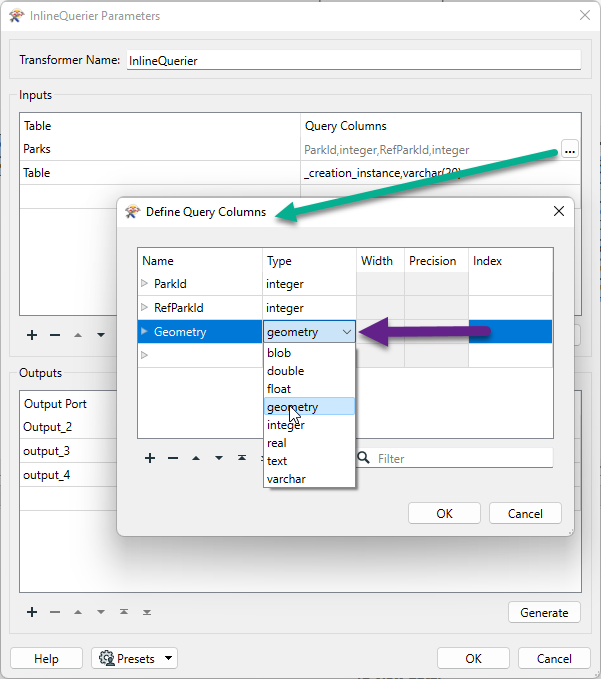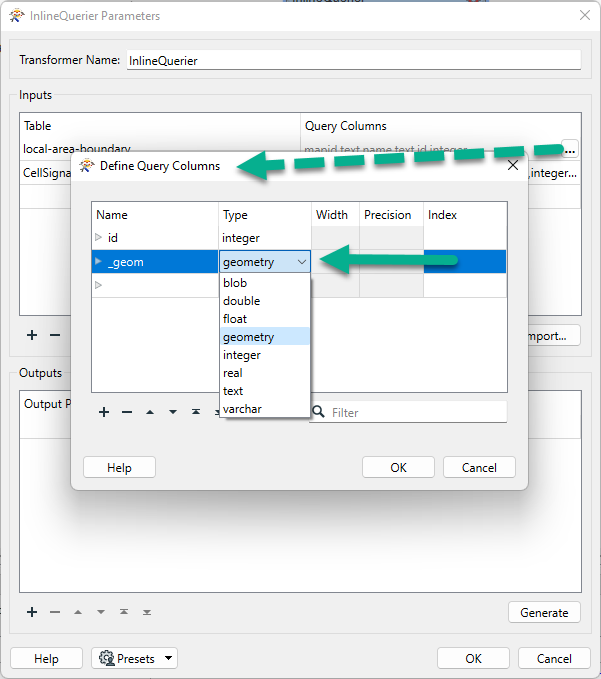In the new, fantastic, InlineQuerier (2023 beta), a geometry column can be selected. Is there a way to call directly the geometry of the feature without geometryextractor? On the same topic, is there a way to define the ouptput geometry without using an ST_asText followed by a GeometryReplacer?
Best answer by markatsafe
View original




 Regarding the Query Columns. By default this is set to all the columns on the FME Feature. But InlineQuerier creates a packed column, fme_feature_content, that contains all the feature information (attributes and geometry). So for efficient use of Inlinequerier, only keep the attributes you will use in the query, usually ID's.
Regarding the Query Columns. By default this is set to all the columns on the FME Feature. But InlineQuerier creates a packed column, fme_feature_content, that contains all the feature information (attributes and geometry). So for efficient use of Inlinequerier, only keep the attributes you will use in the query, usually ID's.  Then you can use the geometry in your SQL query:
Then you can use the geometry in your SQL query: